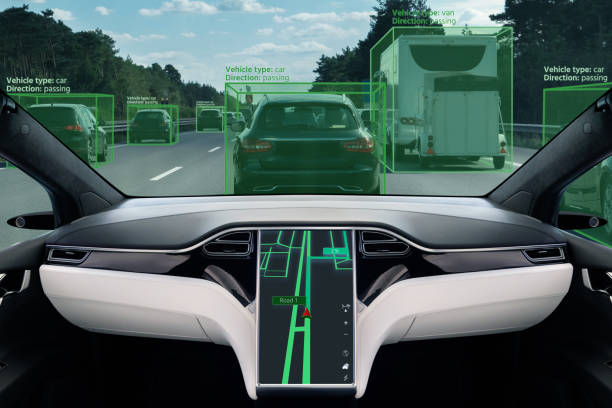Adaptive Headlights: Illuminating the Future of Automotive Safety
The night road stretches ahead, winding through a dense forest. As your car approaches a curve, the headlights swivel, casting light precisely where you need it most. This isn't science fiction—it's the reality of adaptive headlight technology, a game-changing innovation in automotive safety that's transforming how we drive after dark.

The Dawn of Adaptive Lighting
The concept of adaptive lighting in automobiles dates back to the 1960s when the Citroën DS introduced a system that allowed headlights to swivel based on steering input. However, this early implementation was mechanical and limited in its capabilities. It wasn’t until the late 1990s and early 2000s that adaptive headlight technology began to evolve into the sophisticated systems we see today.
Modern adaptive headlights utilize a combination of sensors, actuators, and advanced algorithms to dynamically adjust the direction and intensity of light output. These systems can react in real-time to various factors, including the vehicle’s speed, steering angle, and even GPS data, to optimize illumination for different driving scenarios.
The Mechanics Behind the Magic
At the heart of adaptive headlight systems are several key components working in harmony. High-intensity LED or xenon light sources provide the foundation, offering bright, energy-efficient illumination. These light sources are mounted on motorized platforms that can pivot both horizontally and vertically.
Sophisticated control modules interpret data from the vehicle’s various sensors, including the steering angle sensor, speedometer, and in some cases, cameras and GPS units. This data is used to calculate the optimal headlight position and intensity for any given moment. For instance, when approaching a curve, the system will preemptively angle the headlights into the turn, illuminating the road ahead before the driver even begins to steer.
Beyond Curves: Advanced Functionalities
While cornering lights are perhaps the most well-known feature of adaptive headlights, modern systems offer a range of additional functionalities designed to enhance safety and visibility in various driving conditions.
One such feature is automatic high-beam control. This system uses cameras to detect oncoming vehicles and automatically switches between high and low beams to avoid dazzling other drivers while maintaining maximum visibility for the driver.
Another innovative function is adaptive light distribution, which adjusts the beam pattern based on driving speed and environment. At higher speeds on highways, the beam is focused further down the road. In urban areas, the beam widens to illuminate sidewalks and potential hazards at the roadside.
Some advanced systems even incorporate weather-adaptive lighting. These can detect rain or fog and adjust the headlight beam to reduce glare and improve visibility in adverse conditions.
The Impact on Road Safety
The introduction of adaptive headlights has had a significant positive impact on road safety, particularly for nighttime driving. Studies have shown that these systems can substantially reduce the risk of nighttime accidents, especially on curved roads and in poor weather conditions.
A study by the Highway Loss Data Institute found that vehicles equipped with adaptive headlights were involved in 10% fewer property damage liability claims compared to vehicles without this technology. The safety benefits were even more pronounced for injury claims, with a reduction of up to 30% in some vehicle models.
These improvements in safety can be attributed to several factors. Adaptive headlights provide better illumination of the road ahead, allowing drivers to detect potential hazards earlier and react more quickly. They also reduce glare for oncoming traffic, decreasing the risk of temporary blindness that can occur when facing bright headlights.
Regulatory Landscape and Future Developments
Despite their proven safety benefits, the adoption of adaptive headlight technology has been somewhat hindered by regulatory constraints in some regions. In the United States, for example, regulations have traditionally required separate high and low beam headlights, limiting the implementation of more advanced adaptive systems.
However, recent changes in regulations are opening the door for more widespread adoption of this technology. In 2022, the National Highway Traffic Safety Administration (NHTSA) announced new rules allowing for the use of adaptive driving beam headlights in the U.S., aligning with regulations already in place in Europe and other parts of the world.
Looking to the future, adaptive headlight technology is poised for further advancements. Integration with other vehicle systems, such as navigation and advanced driver assistance systems (ADAS), could allow for even more precise and predictive lighting adjustments. Some manufacturers are exploring the use of matrix LED systems, which can selectively dim portions of the light beam to avoid glare while maintaining full illumination elsewhere.
As vehicles become increasingly connected and autonomous, adaptive headlights are likely to play a crucial role in ensuring safety and enhancing the driving experience. The ability to precisely control lighting based on a wealth of real-time data opens up exciting possibilities for improving visibility and reducing accidents on our roads.
In conclusion, adaptive headlights represent a shining example of how technological innovation can significantly enhance automotive safety. As this technology continues to evolve and become more widely adopted, it promises to make nighttime driving safer and more comfortable for all road users. The future of automotive lighting is bright indeed, and adaptive headlights are leading the way.





